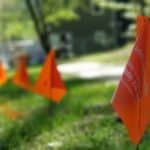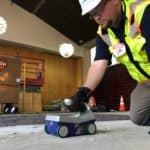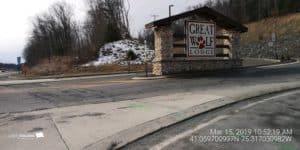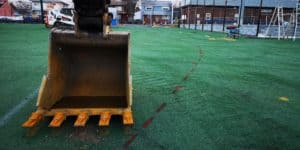The Right Tools Get The Right Results
Utility Locator Inc inspects pipes, conduits, and culverts from 4″ – 76″ using a combination of flexible push cameras, as well as heavy duty robotic crawlers. We can access the sanitary sewer or storm pipe to be inspected from manholes, inlets, outfalls, or any man made opening in the pipe.
Utility Locator, LLC provides all video pipe inspection clients with a comprehensive report that is Nassco® PACP®, MACP®, and LACP® compliant, using the Nassco® certification and proper codes.
Smaller Pipes 4″ – 8″ Diameter
For smaller pipes, we utilize push camera to video inspect the pipe or conduit. The camera is inserted into the pipe opening and manually feed through the line to be inspected. The video feed is displayed on a monitor and a report can be drafted on the spot. The video recordings can be made available instantly using any USB Storage Device or SD Card.
Larger Pipes 8″ – 65″ Diameter
For larger pipes, we pull out the big guns. Our robotic crawlers have the capacity to video inspect up to 1000 linear feet of pipe from a single access point. There are many up-fits available to enhance the equipment to ensure the best quality video and report for each type of pipe or cable. We are able to generate a report with screenshots based on the findings of the video investigation. Video files, screenshots, report documents, and project files are available immediately upon completion of the inspection and may be delivered via any USB Storage Device or SD Card.
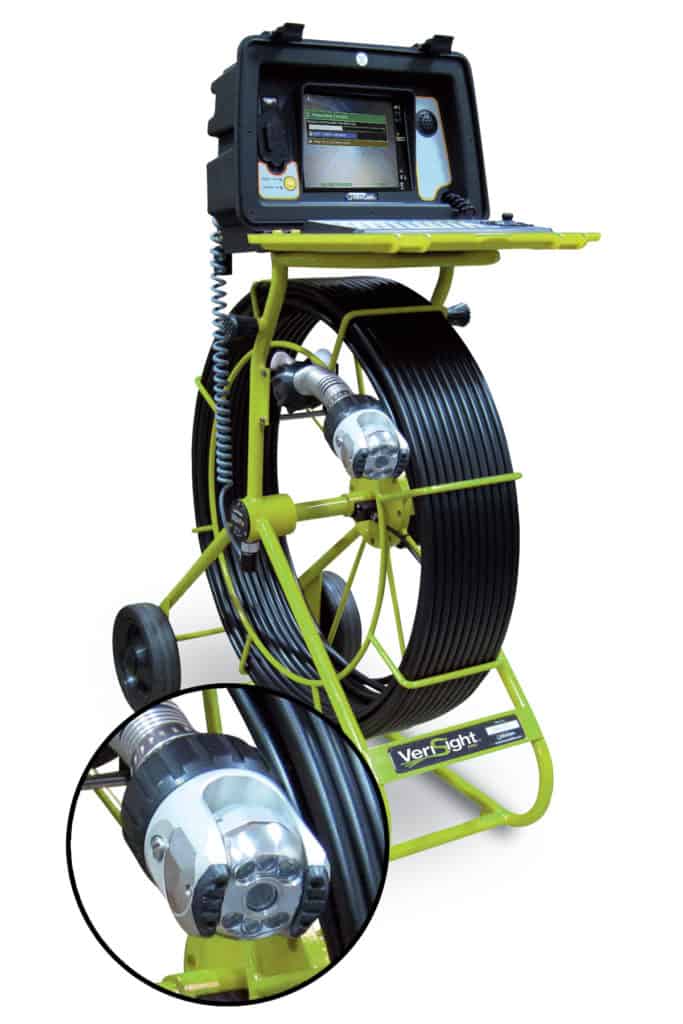
Speak With an Industry Expert Now
(855) 387-4648
VIDEO INSPECTION SERVICES WHERE YOU NEED THEM
You've got questions, we've got answers
Utility Locator Inc provides Ground Penetrating Radar Services to clients in support of our private utility location services. GPR is used to find both conductive and non-conductive pipes, cables, and buried objects below the surface.
Ground Penetrating Radar systems work by transmitting a radio signal through the earth. The transmitted signal will reflect off of both native earth materials as well as man-made subsurface structures or disturbances. The reflected radio waves will travel back to the GPR unit at different velocities. The velocity of the signal is dependent upon the conductivity of the material for which it was reflected from.
Using GPR, we may have the capacity to identify the presence of both conductive and non-conductive pipes, cables, and structures such as underground storage tanks (UST), manholes, slabs, foundations, and vaults.
Utility Locator Inc provides Ground Penetrating Radar Services to clients in support of our private utility location services. GPR is used to find both conductive and non-conductive pipes, cables, and buried objects below the surface.
Ground Penetrating Radar systems work by transmitting a radio signal through the earth. The transmitted signal will reflect off of both native earth materials as well as man-made subsurface structures or disturbances. The reflected radio waves will travel back to the GPR unit at different velocities. The velocity of the signal is dependent upon the conductivity of the material for which it was reflected from.
Using GPR, we may have the capacity to identify the presence of both conductive and non-conductive pipes, cables, and structures such as underground storage tanks (UST), manholes, slabs, foundations, and vaults.
Utility Locator Inc provides Ground Penetrating Radar Services to clients in support of our private utility location services. GPR is used to find both conductive and non-conductive pipes, cables, and buried objects below the surface.
Ground Penetrating Radar systems work by transmitting a radio signal through the earth. The transmitted signal will reflect off of both native earth materials as well as man-made subsurface structures or disturbances. The reflected radio waves will travel back to the GPR unit at different velocities. The velocity of the signal is dependent upon the conductivity of the material for which it was reflected from.
Using GPR, we may have the capacity to identify the presence of both conductive and non-conductive pipes, cables, and structures such as underground storage tanks (UST), manholes, slabs, foundations, and vaults.
Utility Locator Inc provides Ground Penetrating Radar Services to clients in support of our private utility location services. GPR is used to find both conductive and non-conductive pipes, cables, and buried objects below the surface.
Ground Penetrating Radar systems work by transmitting a radio signal through the earth. The transmitted signal will reflect off of both native earth materials as well as man-made subsurface structures or disturbances. The reflected radio waves will travel back to the GPR unit at different velocities. The velocity of the signal is dependent upon the conductivity of the material for which it was reflected from.
Using GPR, we may have the capacity to identify the presence of both conductive and non-conductive pipes, cables, and structures such as underground storage tanks (UST), manholes, slabs, foundations, and vaults.




